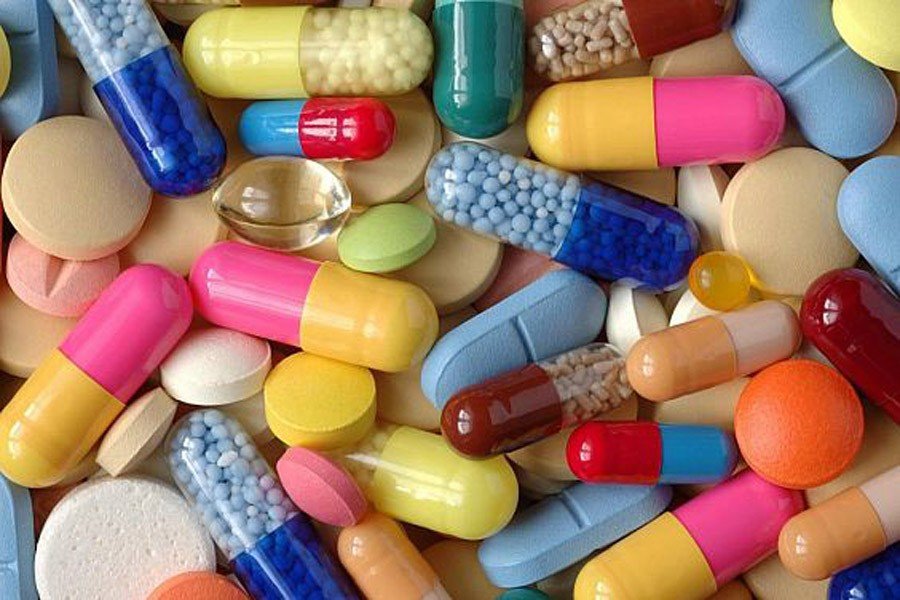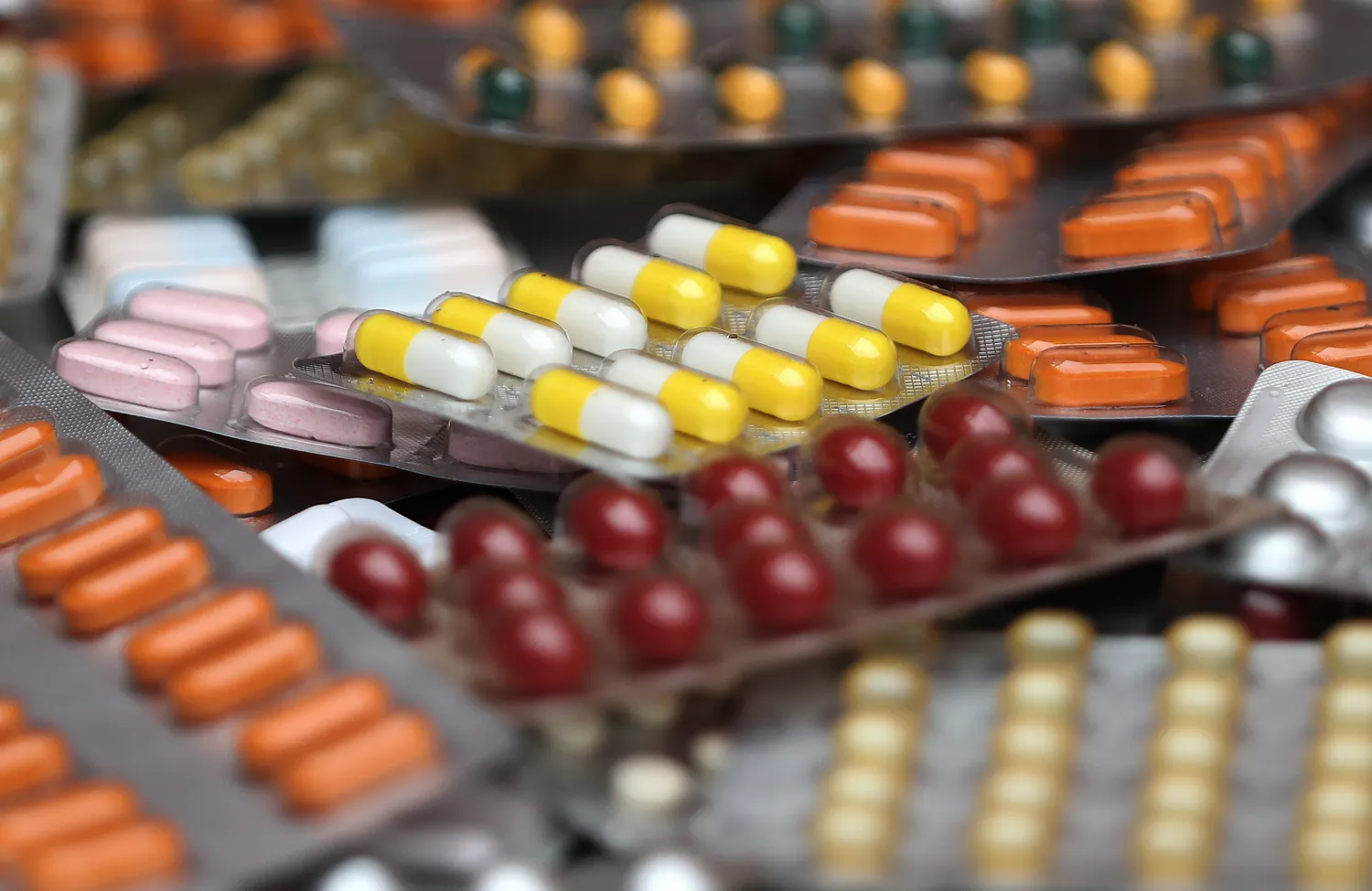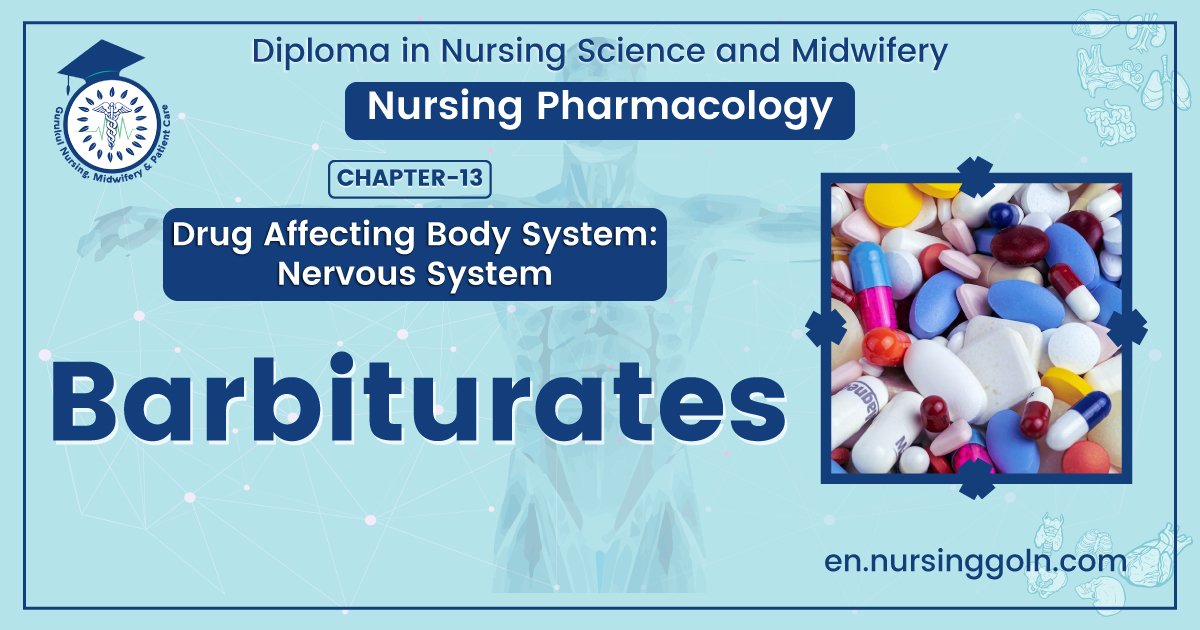Concept About Barbiturates – This book covers the entire syllabus of “Pharmacology” prescribed by BNMC- for diploma in nursing science & midwifery students. We tried to accommodate the latest information and topics. This book is an examination setup according to the teachers’ lectures and examination questions.
At the end of the book, previous questions are given. We hope in touch with the book students’ knowledge will be upgraded and flourish. The unique way of presentation may make your reading of the book a pleasurable experience.
Concept About Barbiturates
Barbiturates are the derivatives of “Barbituric acid,” which is synthesized by condensation of urea and malonic acid.
| 1. Ultra-short acting | Properties |
| Thiopental Na+ Hexobarbitone Na+ | Act within second. Duration of action: 30 min. Main use: as I/v anaesthesia |
| 2. Short acting | Properties |
| Pento-barbitone Quino-barbitone Seco-barbitone | Duration of action: 2 hours. Main use: as sedative. |
| 3. Intermediate acting | Properties |
| Amilo-barbitone Allo-barbitone Buto-barbitone Vin-barbitone | Duration of action: 3-6 hours. Main use: as hypnotic. |
| 4. Long acting | Properties |
| Barbitone Phenobarbitone Mepho-barbitone Apo-barbitone | Duration of action: > 6 hours. Main use: as anticonvulsant. |
A. According to therapeutic utility:
1. Long acting barbiturate (anti-convulsant & sedative)
2. Intermediate & short acting (sedative and hypnotic)
3. Ultra-short acting (basal anaesthetics or I/v G.A)

B. According to Chemical structure
1. Oxybarbiturate (if O2 is present)
2. Thiobarbiturate (if O2 is replaced by sulphur)
Mechanism of action of Barbiturates:
Barbiturates are general depressant of all the cells of the body. Acting as a cellular histologic agent. But the cells of CNS are more sensitive to Barbiturates action.
1. Barbiturates induce sleep by selectively depressing RAS in the brain stem.
2. Barbiturates selectively depress neuronal activity in posterior hypothalamus, amygdaloid nucleus and limbic structure (CNS depressant effect).
3. Barbiturates depress monosynaptic pathway of spinal cord (anti-convulsion).
4. Barbiturates have also GABA like activity or enhance GABA activity.
Barbiturates + GABA
↓
Activation of GABA receptor
↓
Opening of chloride channel
increase the duration of GABA gated channels opening
↓
Hyperpolarization of cells
↓
Depression of CNS
(RAS: reticular activating system. GABA: gamma amino butyric acid).
Pharmacological action of Barbiturates:
A. On CNS
1. Mild degree of sedation to general anesthesia.
2. Anti-convulsant effects.
3. Respiratory centre depression (respiratory failure)
4. Medullary vasomotor inhibition (circulatory collapse)
B. On CVS
1. Hypotension (slight)
2. Decrease heart rate
3. Circulatory collapse.
C. On Liver
1. Enzyme induction, so increase metabolism of itself and other drugs.
2. Stimulate glucoronyl transferase.
D. On kidney
1. Anti-diuretic effect (increase ADH)
2. Decrease urinary output by depressing GFR.
E. On Eye
1. No effect (normal dose)
2. Miosis (toxic dose)
F. On GIT: Constipation (on prolong used).
Indication of Barbiturates:
A. As anti-convulsants
- Tetanus
- Epilepsy
- Cerebral haemorrhage
- Convulsant drug poisoning
- During surgical anaesthesia.

B. As sedative and hypnotics.
C.Intravenous anaesthesia (thiopental-Na)
D. Hyperbilirubinaemia and kernicterus (in neonates)
E. Kernicterus (children)
F. Haemolytic jaundice.
G. Cholestasis.
H. In narco-analysis and narcopathy.
I Identifying the dominant cerebral hemisphere for speech prior to neuro-surgery.
Barbiturates stimulate liver glucoronyl transfesase which is responsible for bilirubin metabolism; this is why barbiturates are used Hyperbilirubinaemia and kernicterus & jaundice.
Contraindication of Barbiturates
- Pulmonary insufficiency with pulmonary emphysema.
- In idiosyncratic patient.
- Acute intermittent porphyria.
- In impaired renal function
- In hepatic failure.
- Patient with suicidal tendency.
- CCF and hypovolemic shock
Adverse effect of Barbiturates
➤ Pain: Localized or diffuse myalgic, neuralgic or arthritic pain especially in psychoneurotic patient.
➤ Allergic skin lesions.
➤ After effects:
- Drowsiness
- Hangover effect
- Over excitement
- Night mares & night tenors
- Weakness, lethargy.
➤ Drug automatism (accidental poisoning)
➤ Addiction liability (physical & psychological dependence.
➤ Enzyme induction (so tolerance develops rapidly)
➤ Idiosyncratic reaction: barbiturates precipitate attacks of acute porphyria in susceptible individual.
Drug interaction:
| Interactions | Possible Cause |
| Barbiturates + Warfarin Decrease the anticoagulant effect of warfarin | Barbiturates increase the metabolism of warfarin by enzyme induction. |
| Barbiturates + Phenytoin Digoxin/theophylline/steroid Decrease pharmacological action of these agents. | Barbiturates increase the metabolism of other drugs by inducing enzymes |
Barbiturates + Alcohol/narcotics/tranquillisers/antihistamin/Tricyclic antidepressant/less/5 antihypertensives More CNS depression,
Barbiturates + Vitamin D Osteomalacia
Barbiturates + oral contraceptives Chance of pregnancy.
Barbiturates Poisoning
20%-70% of poisoning occurs due to barbiturates. It occurs due to attempt to suicide.20
- Fatal dose = 10 times of clinically used dose.
- Death comes from cardiovascular failure.
Signs & symptoms of barbiturates poisoning:
| CNS |
|
| CVS |
|
| Lungs |
|
| Kidney |
|
| Temperature |
|
| Eye |
|
| Limb reflexes |
|
| Skin |
|
| Death from |
|
Treatment of Barbiturates Poisoning
A. General measures
- Removal of unabsorbed drug by stomach wash
- Artificial respiration & O2 inhalation
- Universal antidote: activated charcoal
- Specific antidote: inj. Bemegride or Amiphenazole
- I/v fluid, plasma to combat hypotension.

B. Specific measures
- Antibiotic to prevent pulmonary infection (because there is chance of aspiration).
- Cardiotonic agent (if patient is in shock): injection Dopamine. Dopamine also increase renal blood flow (beneficial in oliguria/anuria)
- Forced alkaline diuretics with K supplement to increase excretion (because barbiturate is an acidic drug): Mannitol + Frusemide + NaHCO3 + KCI.
- If coma for long time: Milk or glucose by feeding tube and change in position of the patient frequently to avoid hypostatic pneumonia.
Withdrawal Syndrome of barbiturate:
- Anxiety
- Feeling of weakness
- Intention tremor
- Dizziness
- Nausea
- Distorted vision
- Delirium
- Convulsion (in severe case)
Advantages of Benzodiazepines over Barbiturates:
| Benzodiazepines (Diazepam) | Barbiturates |
| Less pronounced CNS depressant action, relatively selective. | More pronounced CNS depressant action, non-selective CNS depressant |
| Benzodiazepines are not General neuronal depressants. | Barbiturates also depress general neurons. |
| Therapeutic index high; so safer. | Less therapeutic not safe |
| Relatively safer in overdose. | Acute overdose causes serious cardio- respiratory Depression, coma and ends in death. |
| Less hangover, Slowly developing tollerance, | Marked hangover.use |
| Slowly developing tollerance, | Develops rapid tolerance due to enzyme induction. |
| Less addiction liability | Addiction liability is greater. |
Read more:
